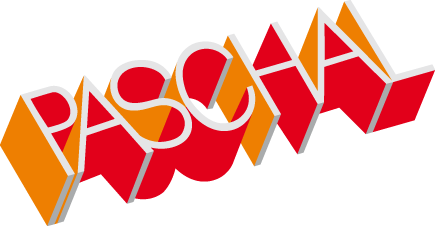All the way to the top
Rollsdorf sewage treatment plant to be extended
Logo.3 formwork without shoring at the round pinnacle of a sewage treatment plant digestion towerCost-based considerations play an increasing role in works scheduling for construction sites. The selection of the method which indicates the optimum result in terms of its cost/benefit analysis is becoming increasingly difficult as construction sites become ever more complex.
The extension of the Rollsdorf sewage treatment plant is such a case: At the round pinnacle of an existing digestion tower, an extension should be installed – in keeping with the most stringent of standards. This type of concrete work can be quite costly in terms of expense and effort.
How was it possible to find the optimum solution?
Rollsdorf (Saxony-Anhalt)
The association for sewage treatment of Eisleben commissioned the company beton & rohrbau C.-F. Thymian GmbH & Co. KG (Halle branch) to build several extension structures for the Rollsdorf sewage treatment plant. This plant was to be extended at a cost of 6.1 million EUR to serve 65,000 residents.
The excavation work began in early 2010; the structural work was under way in April 2010. Just recently, in April 2011, this work was brought to a successful conclusion; already as of autumn 2011, the new facility is set to go on line.
Selection of shoring and formwork
The foundations, walls and slabs for the service buildings were constructed quickly, efficiently and smoothly - with the Logo.3 system formwork manufactured by PASCHAL. Here, class C 30/37 concrete was used.
The actual challenge on this construction site lay in the construction of a cantilever slurry table (dimensions: 3.30 m wide, 4.01 m long, with 20-cm-thick walls) at the round pinnacle of the digestion tower – at an altitude of 13 m.
Should a shoring be assembled here – or should another solution be found?
The advantage of shorings lies in their high load capacity; the working surface would also be easily expandable. The dismantling of the slurry table could also be performed without difficulty.
On the other hand, a shoring requires a stable subsoil or even a foundation – since otherwise, settling may occur. Furthermore, each square meter required at the top (on the working surface) finds its space-consuming equivalent at the bottom. In addition, bracings – along with the numerous technical connectors to the existing structure and the ultimately high material value of the scaffolding - are included in the cost calculations.
By contrast, a small-scale, fixed-assembly working level (accessible via a small stairwell scaffolding and firmly attached to the tower) requires a mere fraction of the area on the ground; the number of connectors on the existing structure is likewise significantly lower.
The drawbacks of this solution are the lower load capacity as well as the assembly and disassembly work involved.
The circumstance that no holes can be drilled in the wall of the digestion tower would also have to be considered. Also, the pouring of concrete into the roof pitches required two concreting cycles at high altitude; here, it is essential to consider the buoyancy and the down forces. Due to the different roof slopes, the formwork would also have to be extraordinarily flexible.
Efficiency
Finally, the most affordable and quickest option (which also made it the most efficient) was found:
- A working surface was constructed, dimensioned at approx. one third of the circumference on the eaves, and which was firmly attached to the digestion tower. Large, 4.0 m protruding cantilever beams deflected the load; the anchoring was performed with adhesive anchors. A lightweight stairwell tower provided access.
- The Logo.3 system formwork was likewise used for this part. Due to its construction-site-friendly panel grading, it is particularly suited to this project. At panel heights of 340, 270 and 240 cm, panel widths of 90, 75, und 50 cm were applied.
The site manager Thomas Polzer and the site foreman Maik Jenkel from the company beton & rohrbau appeared highly satisfied with the results.

The extension of the Rollsdorf sewage treatment plant also included the digestion tower. Here, an affordable and quick method was found to construct these. Nevertheless, the safety and quality of the construction process itself were the top priorities.





